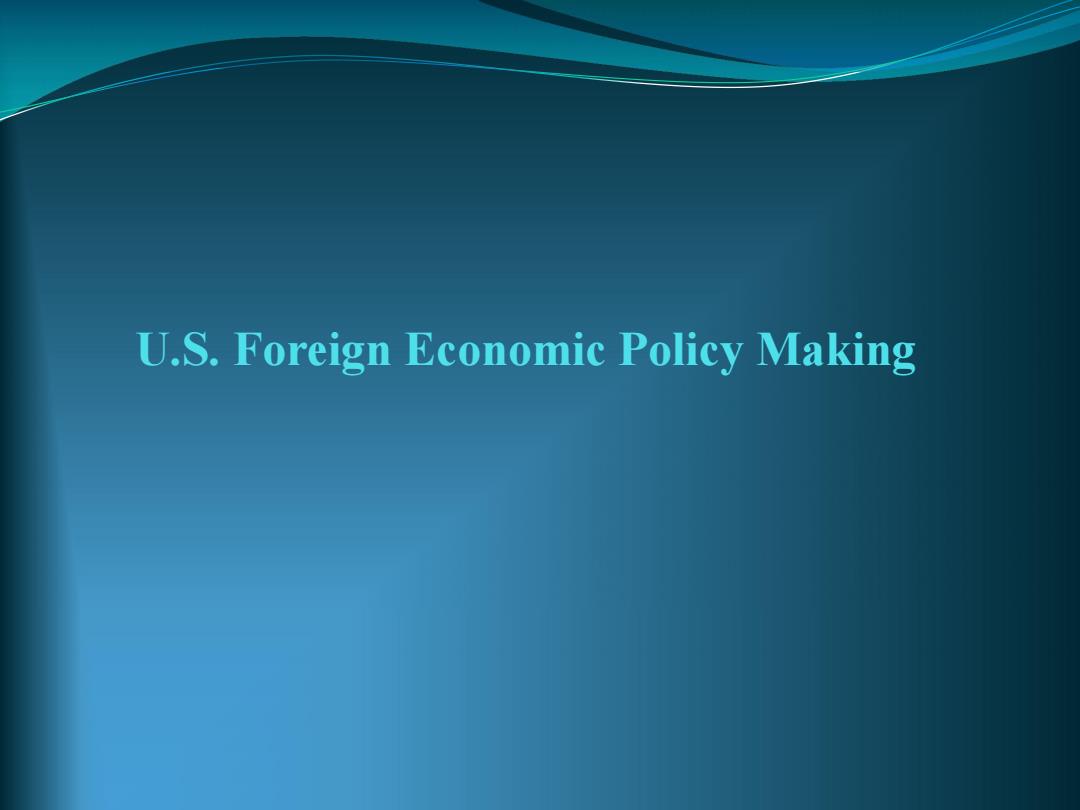
U.S.Foreign Economic Policy Making
U.S. Foreign Economic Policy Making
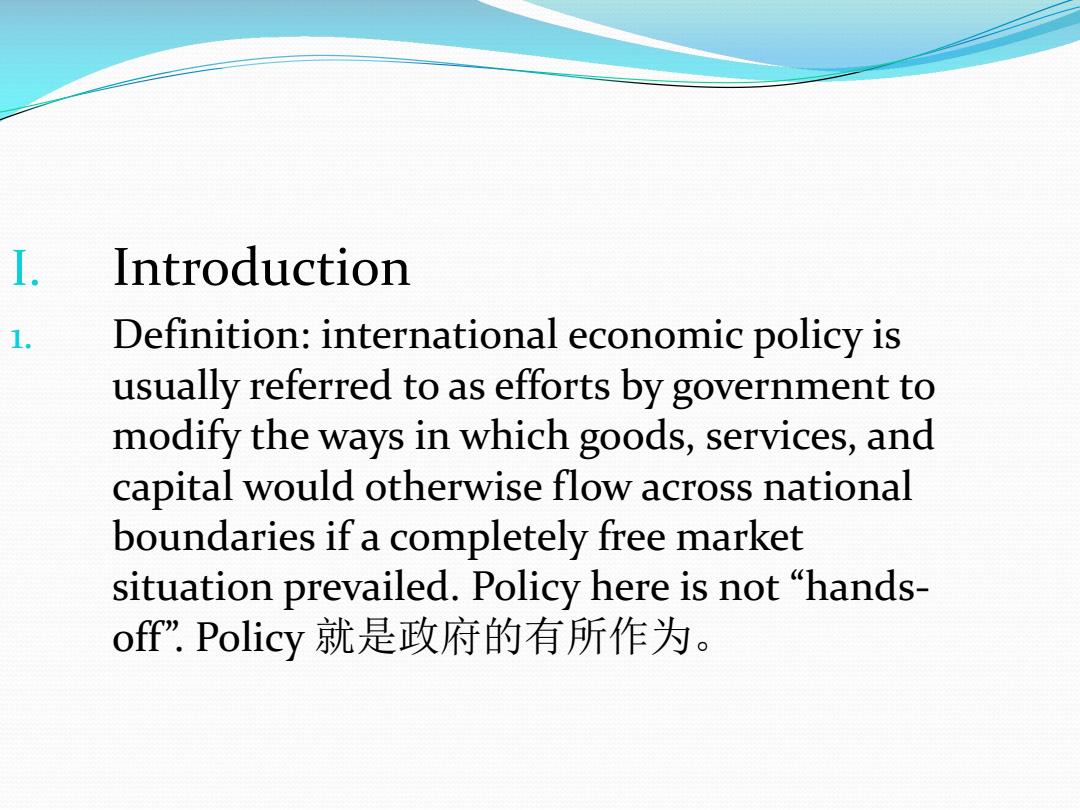
I. Introduction 1. Definition:international economic policy is usually referred to as efforts by government to modify the ways in which goods,services,and capital would otherwise flow across national boundaries if a completely free market situation prevailed.Policy here is not "hands- off”,Policy就是政府的有所作为
I. Introduction 1. Definition: international economic policy is usually referred to as efforts by government to modify the ways in which goods, services, and capital would otherwise flow across national boundaries if a completely free market situation prevailed. Policy here is not “hands- off”. Policy 就是政府的有所作为
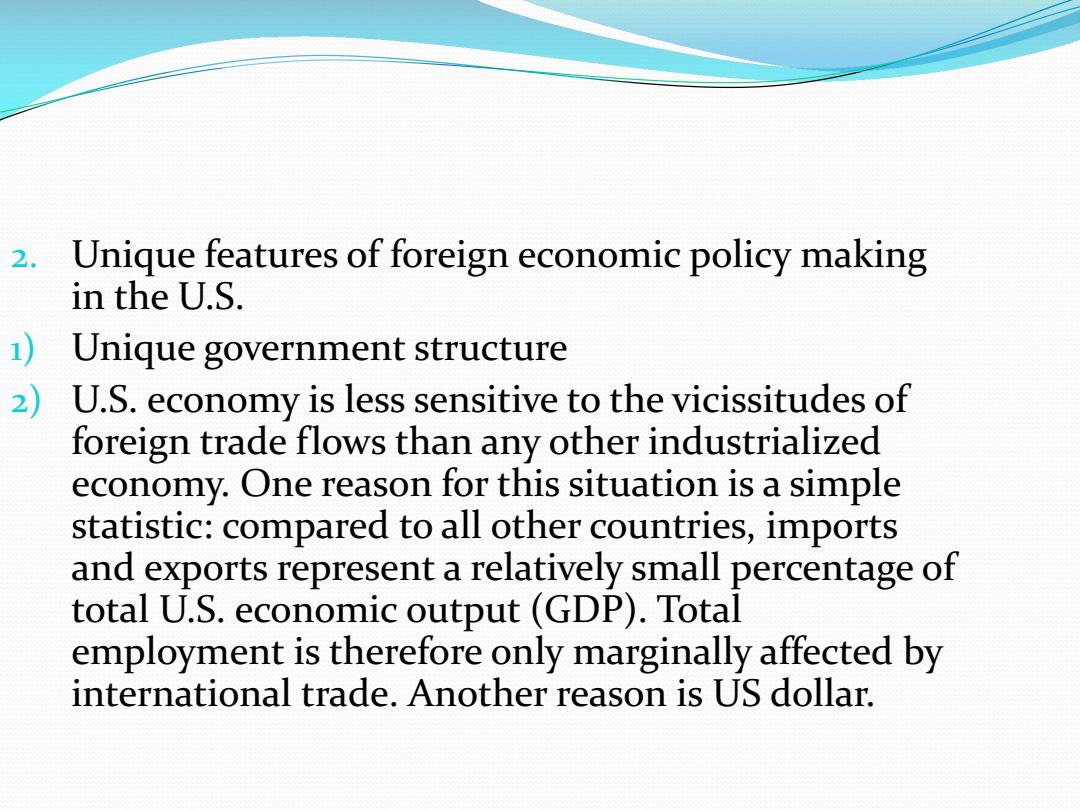
2. Unique features of foreign economic policy making in the U.S. Unique government structure 2) U.S.economy is less sensitive to the vicissitudes of foreign trade flows than any other industrialized economy.One reason for this situation is a simple statistic:compared to all other countries,imports and exports represent a relatively small percentage of total U.S.economic output(GDP).Total employment is therefore only marginally affected by international trade.Another reason is US dollar
2. Unique features of foreign economic policy making in the U.S. 1) Unique government structure 2) U.S. economy is less sensitive to the vicissitudes of foreign trade flows than any other industrialized economy. One reason for this situation is a simple statistic: compared to all other countries, imports and exports represent a relatively small percentage of total U.S. economic output (GDP). Total employment is therefore only marginally affected by international trade. Another reason is US dollar
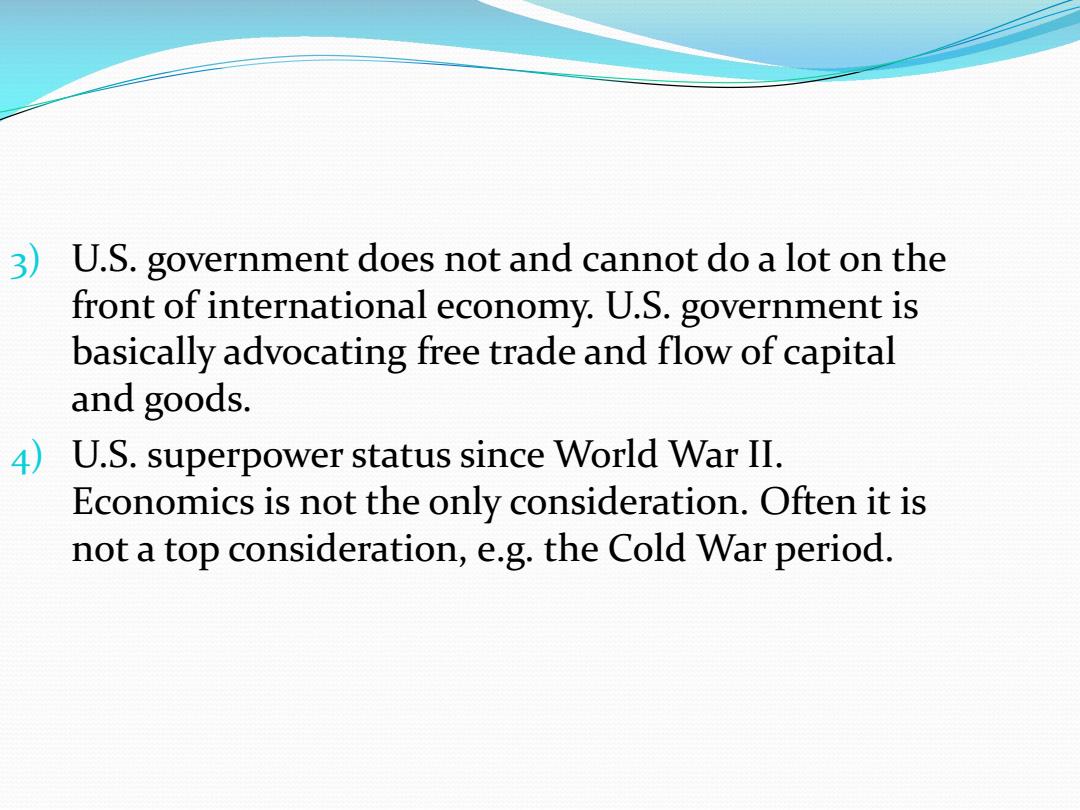
3)U.S.government does not and cannot do a lot on the front of international economy.U.S.government is basically advocating free trade and flow of capital and goods. 4) U.S.superpower status since World War II. Economics is not the only consideration.Often it is not a top consideration,e.g.the Cold War period
3) U.S. government does not and cannot do a lot on the front of international economy. U.S. government is basically advocating free trade and flow of capital and goods. 4) U.S. superpower status since World War II. Economics is not the only consideration. Often it is not a top consideration, e.g. the Cold War period
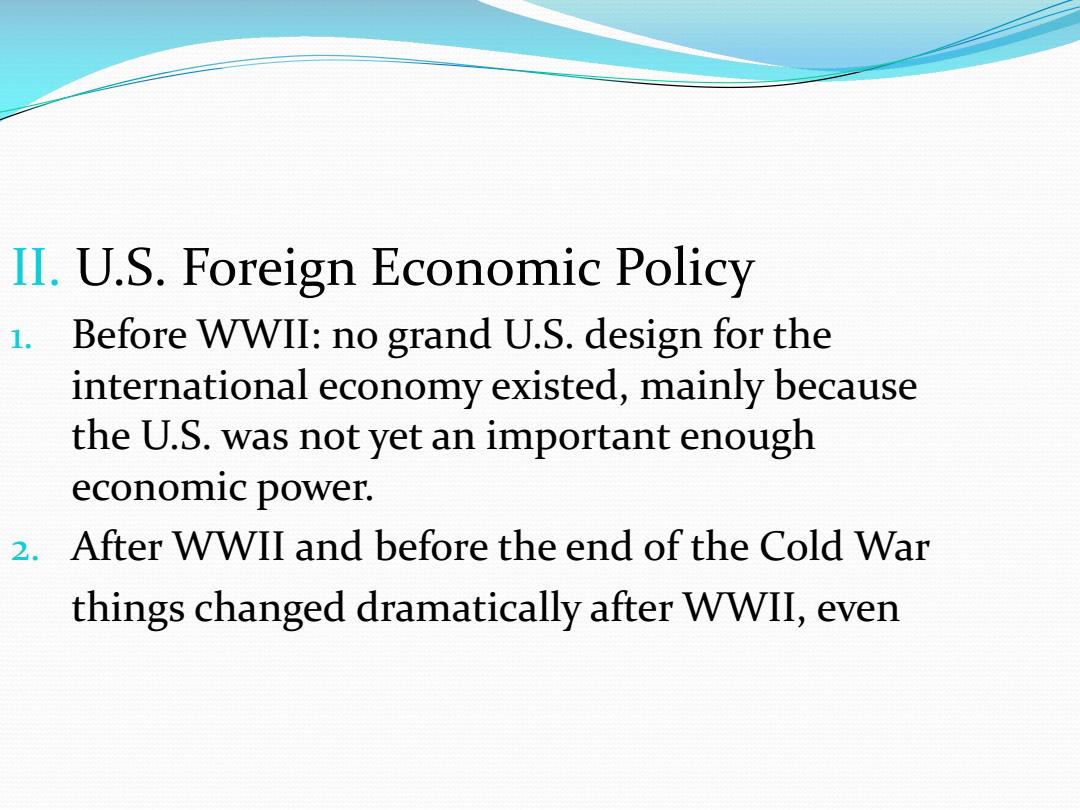
II.U.S.Foreign Economic Policy 1.Before WWII:no grand U.S.design for the international economy existed,mainly because the U.S.was not yet an important enough economic power. 2.After WWII and before the end of the Cold War things changed dramatically after WWIl,even
II. U.S. Foreign Economic Policy 1. Before WWII: no grand U.S. design for the international economy existed, mainly because the U.S. was not yet an important enough economic power. 2. After WWII and before the end of the Cold War things changed dramatically after WWII, even
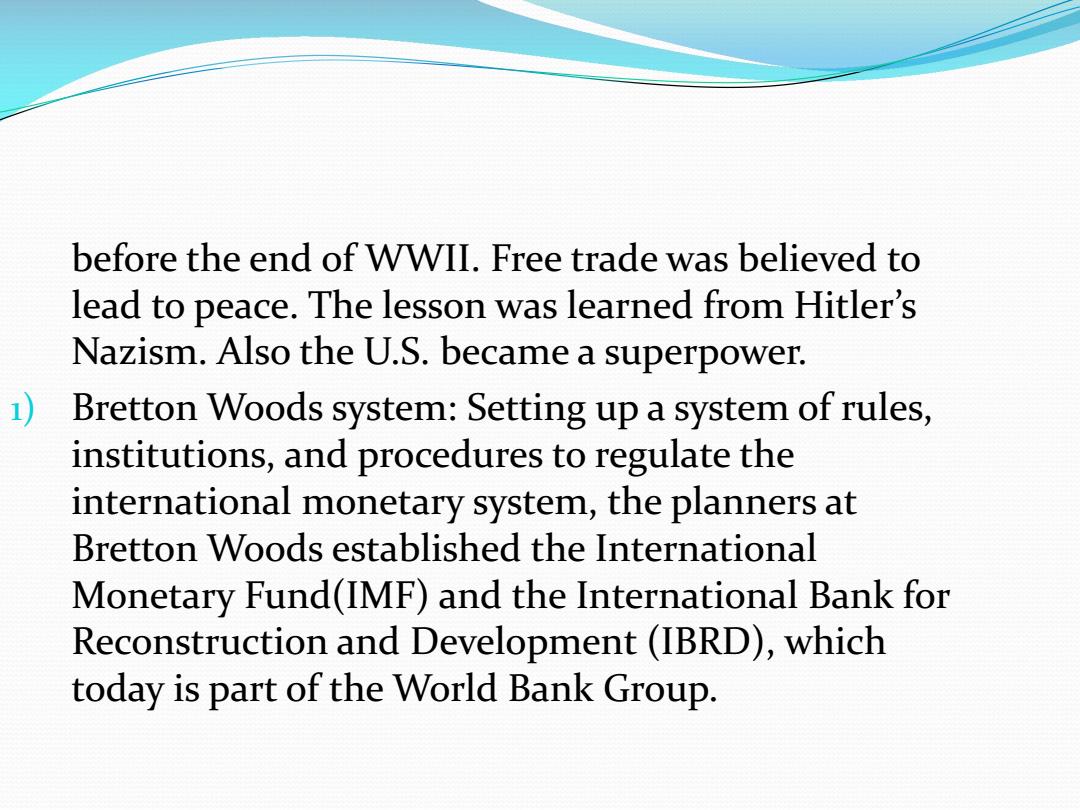
before the end of WWIl.Free trade was believed to lead to peace.The lesson was learned from Hitler's Nazism.Also the U.S.became a superpower. 1)Bretton Woods system:Setting up a system of rules, institutions,and procedures to regulate the international monetary system,the planners at Bretton Woods established the International Monetary Fund(IMF)and the International Bank for Reconstruction and Development(IBRD),which today is part of the World Bank Group
before the end of WWII. Free trade was believed to lead to peace. The lesson was learned from Hitler ’ s Nazism. Also the U.S. became a superpower. 1) Bretton Woods system: Setting up a system of rules, institutions, and procedures to regulate the international monetary system, the planners at Bretton Woods established the International Monetary Fund(IMF) and the International Bank for Reconstruction and Development (IBRD), which today is part of the World Bank Group
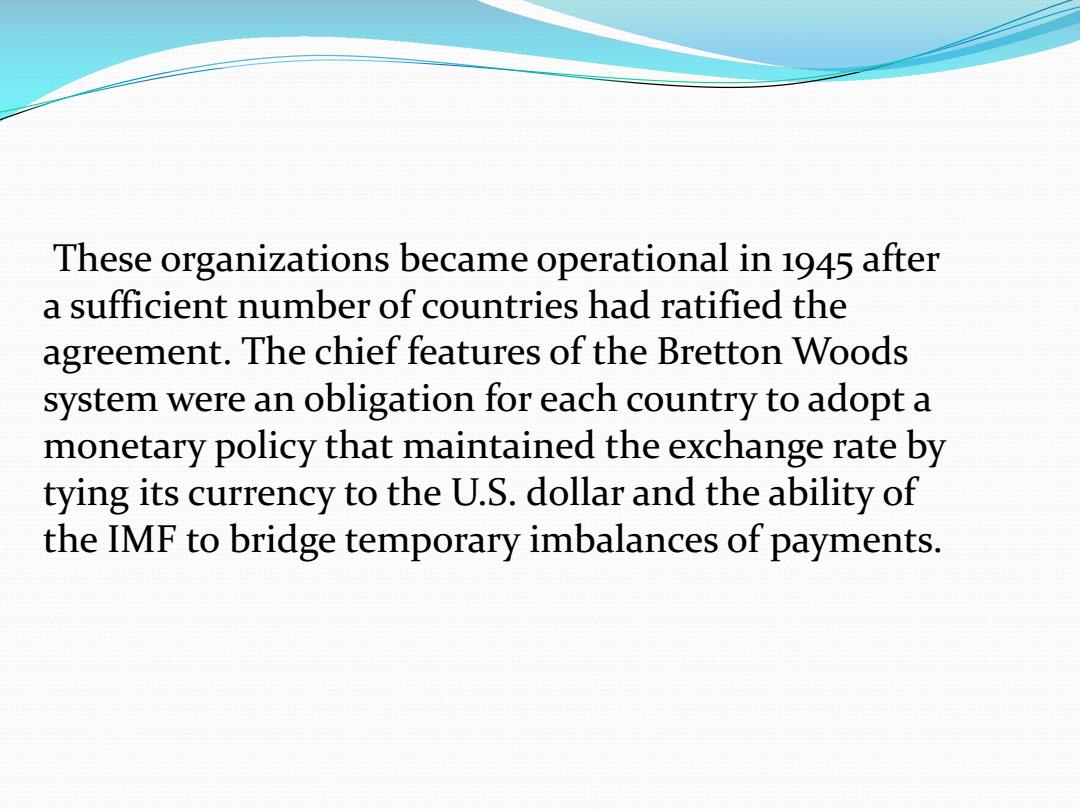
These organizations became operational in 1945 after a sufficient number of countries had ratified the agreement.The chief features of the Bretton Woods system were an obligation for each country to adopt a monetary policy that maintained the exchange rate by tying its currency to the U.S.dollar and the ability of the IMF to bridge temporary imbalances of payments
These organizations became operational in 1945 after a sufficient number of countries had ratified the agreement. The chief features of the Bretton Woods system were an obligation for each country to adopt a monetary policy that maintained the exchange rate by tying its currency to the U.S. dollar and the ability of the IMF to bridge temporary imbalances of payments
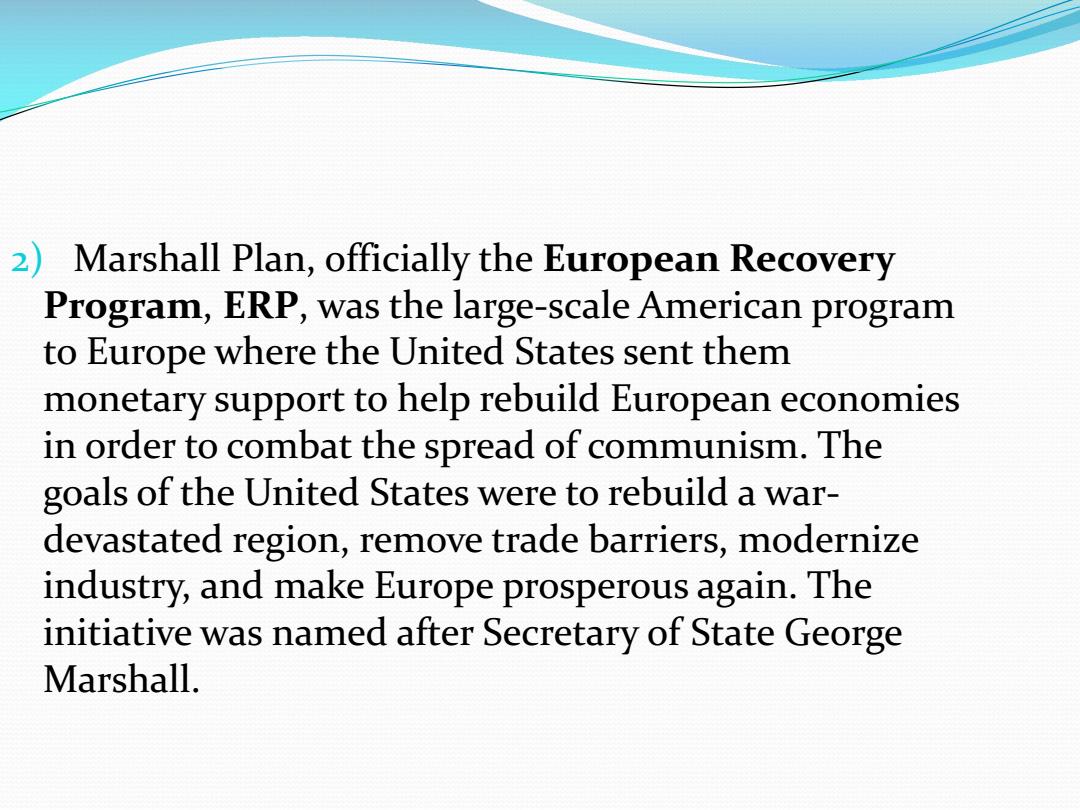
2)Marshall Plan,officially the European Recovery Program,ERP,was the large-scale American program to Europe where the United States sent them monetary support to help rebuild European economies in order to combat the spread of communism.The goals of the United States were to rebuild a war- devastated region,remove trade barriers,modernize industry,and make Europe prosperous again.The initiative was named after Secretary of State george Marshall
2) Marshall Plan, officially the European Recovery Program, ERP, was the large-scale American program to Europe where the United States sent them monetary support to help rebuild European economies in order to combat the spread of communism. The goals of the United States were to rebuild a war- devastated region, remove trade barriers, modernize industry, and make Europe prosperous again. The initiative was named after Secretary of State George Marshall
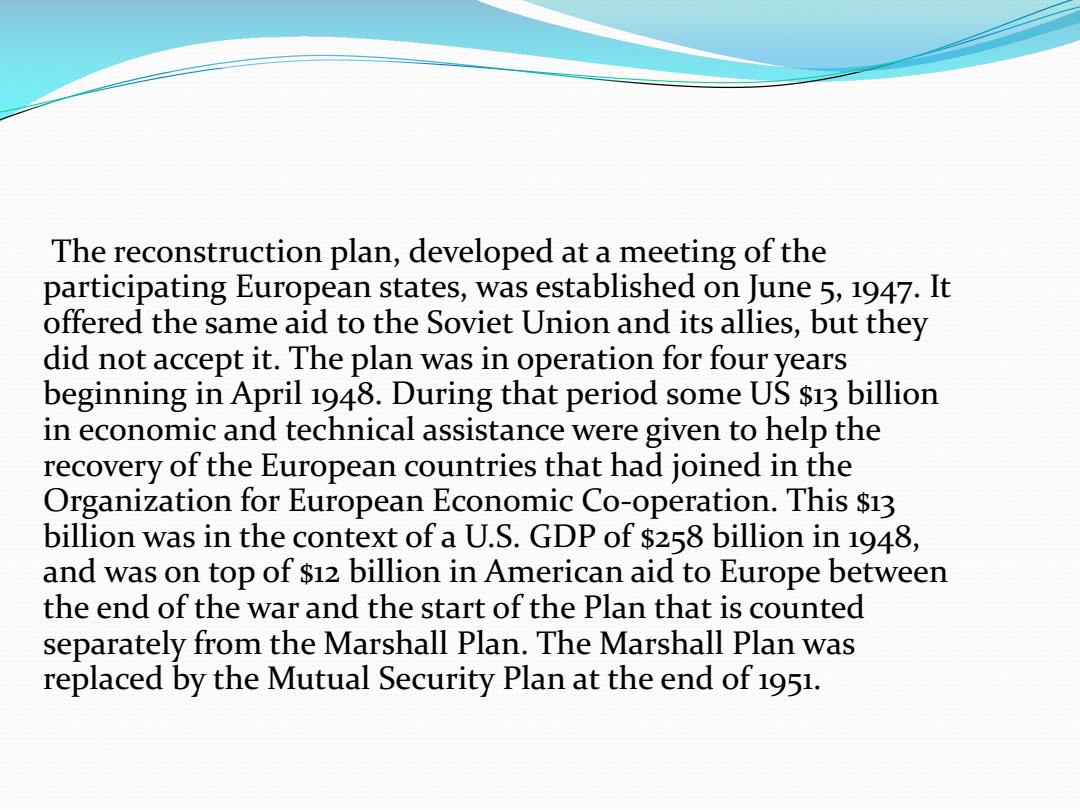
The reconstruction plan,developed at a meeting of the participating European states,was established on June 5,1947.It offered the same aid to the Soviet Union and its allies,but they did not accept it.The plan was in operation for four years beginning in April 1948.During that period some US $13 billion in economic and technical assistance were given to help the recovery of the European countries that had joined in the Organization for European Economic Co-operation.This $13 billion was in the context of a U.S.GDP of $258 billion in 1948, and was on top of $12 billion in American aid to Europe between the end of the war and the start of the Plan that is counted separately from the Marshall Plan.The Marshall Plan was replaced by the Mutual Security Plan at the end of 1951
The reconstruction plan, developed at a meeting of the participating European states, was established on June 5, 1947. It offered the same aid to the Soviet Union and its allies, but they did not accept it. The plan was in operation for four years beginning in April 1948. During that period some US $13 billion in economic and technical assistance were given to help the recovery of the European countries that had joined in the Organization for European Economic Co-operation. This $13 billion was in the context of a U.S. GDP of $258 billion in 1948, and was on top of $12 billion in American aid to Europe between the end of the war and the start of the Plan that is counted separately from the Marshall Plan. The Marshall Plan was replaced by the Mutual Security Plan at the end of 1951
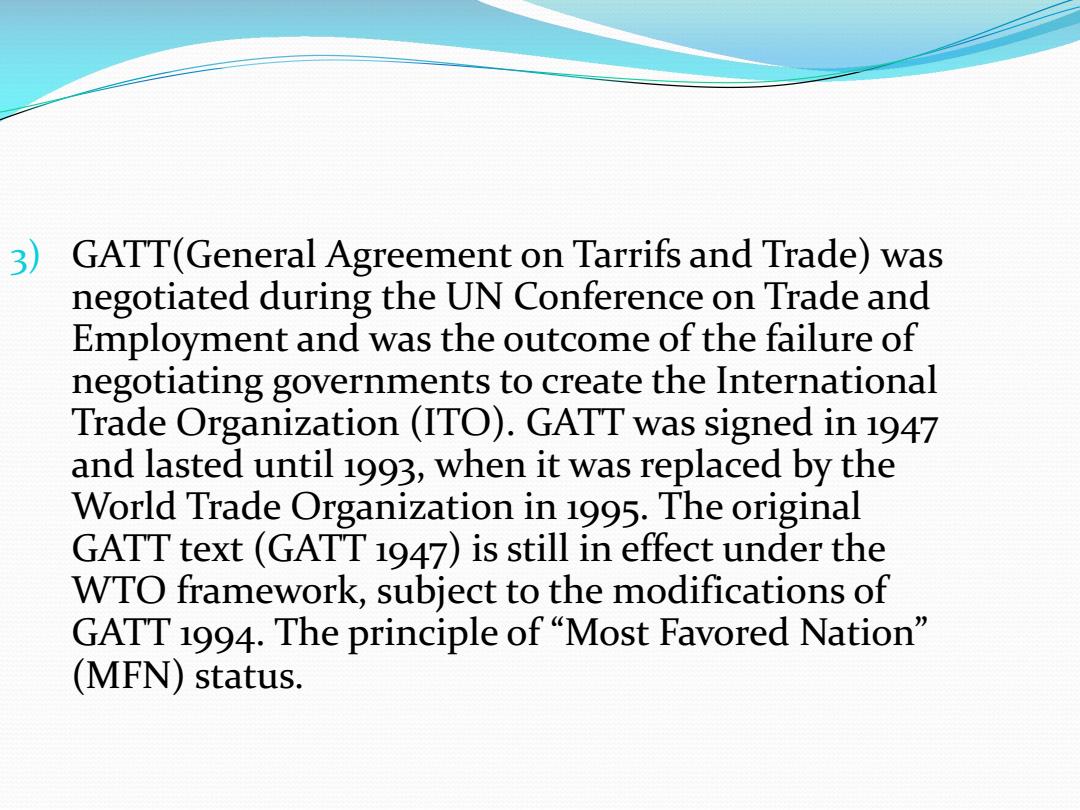
3)GATT(General Agreement on Tarrifs and Trade)was negotiated during the UN Conference on Trade and Employment and was the outcome of the failure of negotiating governments to create the International Trade Organization(ITO).GATT was signed in 1947 and lasted until 1993,when it was replaced by the World Trade Organization in 1995.The original GATT text(GATT 1947)is still in effect under the WTO framework,subject to the modifications of GATT 1994.The principle of "Most Favored Nation' (MFN))status
3) GATT(General Agreement on Tarrifs and Trade) was negotiated during the UN Conference on Trade and Employment and was the outcome of the failure of negotiating governments to create the International Trade Organization (ITO). GATT was signed in 1947 and lasted until 1993, when it was replaced by the World Trade Organization in 1995. The original GATT text (GATT 1947) is still in effect under the WTO framework, subject to the modifications of GATT 1994. The principle of “Most Favored Nation ” (MFN) status